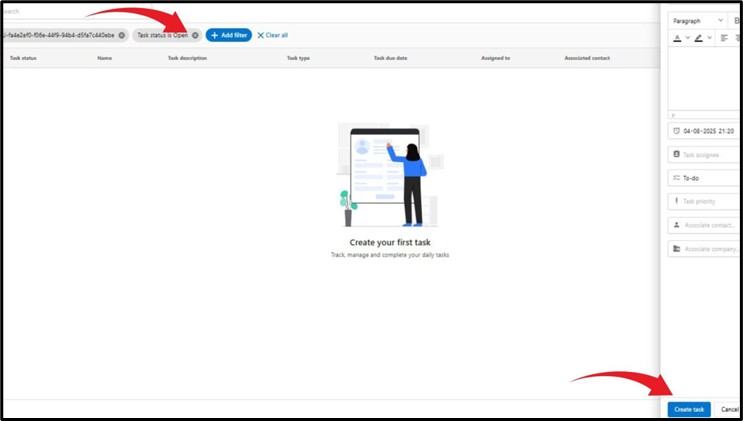Coordinating sales and fulfillment requires more than just good intentions; it demands a system that aligns both departments in real time. The Vault CRM helps you close that gap by enabling automated workflows, task assignments, and seamless handoffs between sales and fulfillment teams. Here’s how to structure your entire delivery cycle.
STEP 1: Set up Your Sales Pipeline
Before teams begin using The Vault CRM, configure your sales pipeline stages to align with fulfillment needs. This alignment makes it easier for fulfillment to anticipate handoffs and prevent breakdowns in customer onboarding.
- Navigate to CRM > Pipelines
- Click Manage Pipelines
- Create or edit a pipeline that reflects your business process (e.g., Lead Qualified, Proposal Sent, Closed-Won, Order Fulfillment Started)
- Ensure that later stages, like “Closed-Won,” include automation triggers to notify or assign fulfillment tasks
STEP 2: Create Sales Tasks
To make sure that there is accountability and workflow handoff, configure sales tasks that automatically prompt fulfillment processes upon deal closure. You can include internal notes, deadlines, and required files in the task template to make sure that fulfillment receives complete context.
- Go to CRM > Tasks
- Select Create Task Template and design tasks tied to specific pipeline stages
- Use automation rules to assign tasks to fulfillment teams or specialists once the deal hits a particular stage.
STEP 3: Use Opportunity Tiles
Opportunity tiles serve as shared checkpoints, so both teams have access to the same live data, reducing the need for status update meetings or back-and-forth emails. This allows both sales and fulfillment teams to monitor status in real time.
- Drag and drop tiles between pipeline stages as deals move forward.
- Add internal notes to the tile for handover clarity.
- Attach documents or links directly to the opportunity.
STEP 4: Link Accounts to Products and Activate Fulfillment Workflows
After a deal is marked “Closed-Won,” it’s time to link that account to the product(s) purchased and activate the respective workflows. If the product is a Vendasta fulfillment service, it automatically initiates the delivery process with minimal manual input. For in-house fulfillment, teams can still be assigned internally with clear timelines and deliverables.
- Open the Opportunity → Click on the related Account
- Navigate to the Products tab
- Select and assign the relevant product (e.g., website build, SEO services, digital advertising)
- Configure start dates, fulfillment preferences, and any client-specific details
STEP 5: Use Team Management Tools
Managing fulfillment efficiently depends on the right team members being assigned at the right time. This helps fulfillment managers prioritize workloads while sales managers maintain visibility into delivery timelines.
- Go to Partner Center > My Team
- Set up user roles and permissions (e.g., Sales Reps, Fulfillment Specialists, Project Managers)
- Use automated task assignment rules based on product type or region
STEP 6: Automate Notifications and Internal Communications
To avoid manual updates and miscommunication, enable internal notifications and email triggers tied to sales and fulfillment events. This real-time communication ensures nothing is missed and both teams stay aligned on customer deliverables.
- Under Partner Center > Notifications, set email alerts for:
- Opportunity stage changes
- Task completions
- New product activations
- Use @mentions in task comments to notify team members directly
STEP 7: Track Performance
Use built-in reporting tools to monitor sales progress and fulfillment timelines without switching platforms. With unified reporting, managers can identify where coordination is breaking down and implement timely improvements.
- Go to the Sales Dashboard to analyze conversion rates, pipeline bottlenecks, and individual rep performance.
- Access Fulfillment Insights to view delivery speed, customer feedback, and task resolution rates.
STEP 8: Maintain Alignment
Both teams can refer to the Account Timeline to view a chronological log of all activity, from first contact to final delivery. This centralized view helps you maintain consistent messaging and prevents customer confusion during handoffs.
- View notes, call logs, email conversations, and task completions.
- Confirm what’s been communicated to the client and when.
- Reduce redundancy and avoid repeating information already provided by the other team.
STEP 9: Conduct Monthly Reviews
A CRM like The Vault is not static; its tools evolve with your workflow. Use its flexibility to keep coordination tight as team needs grow. With coordinated workflows established, periodic reviews will help refine the process.
- Use CRM data to identify where delays occur
- Adjust task templates or pipeline stages based on recurring issues
- Solicit feedback from both sales and fulfillment teams on what’s working or not
When both sales and fulfillment teams operate in sync, customer satisfaction improves, onboarding becomes smoother, and internal efficiency rises. If you’re ready to streamline the way your teams work together, Howell Studios can help you implement The Vault CRM to its full potential. Schedule a consultation to get started today!




